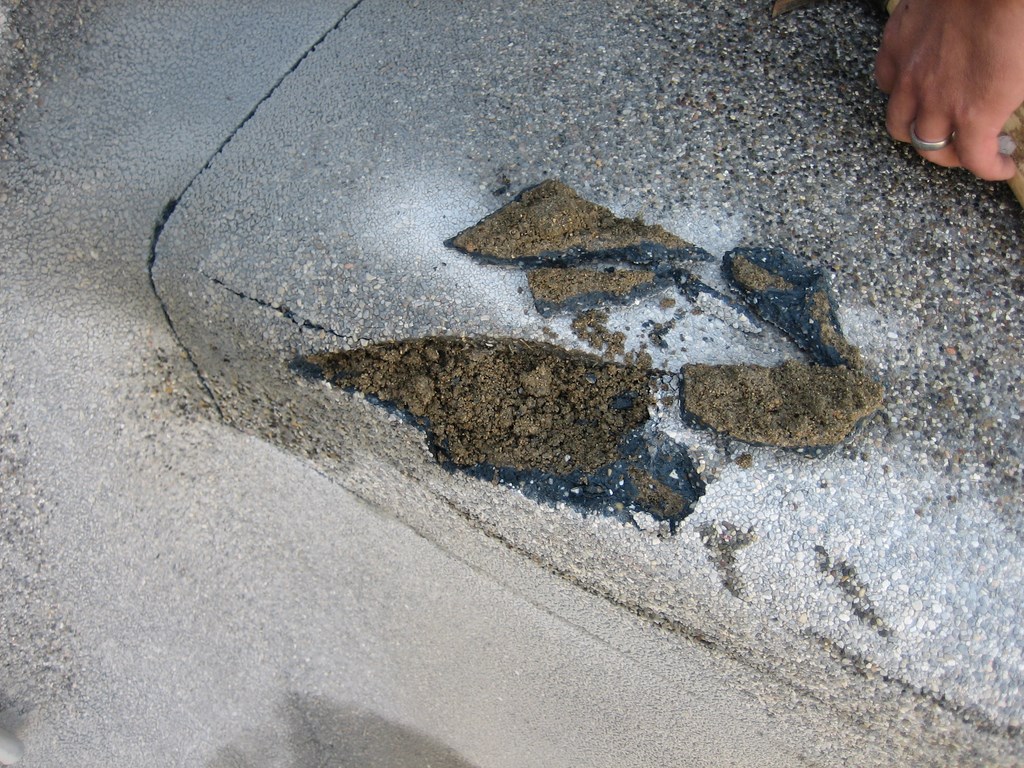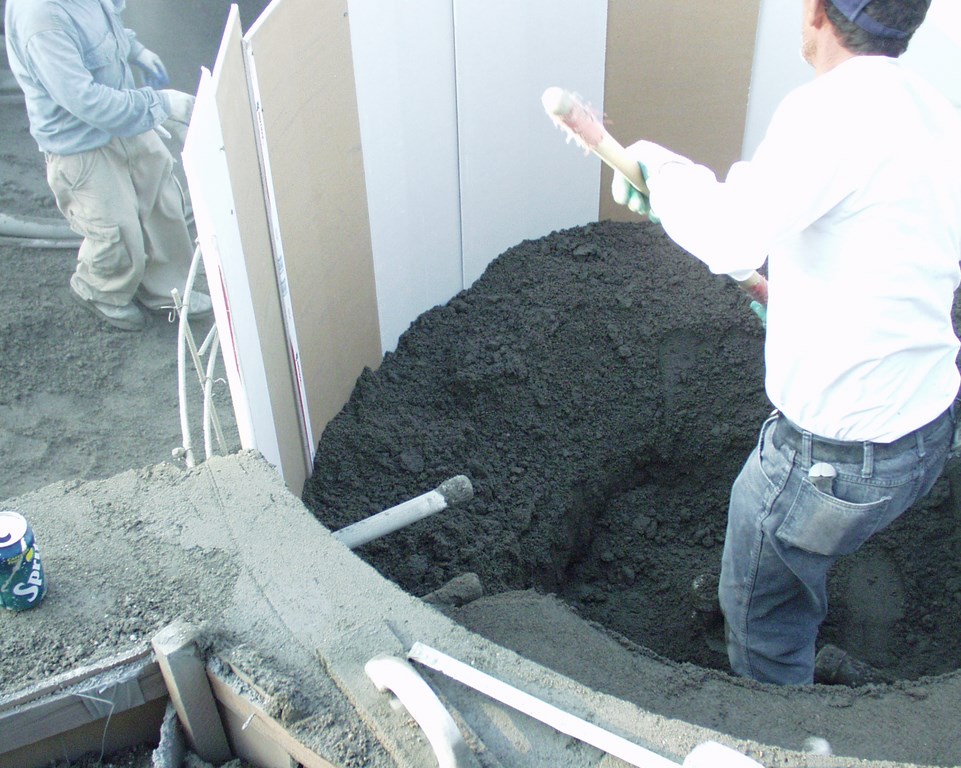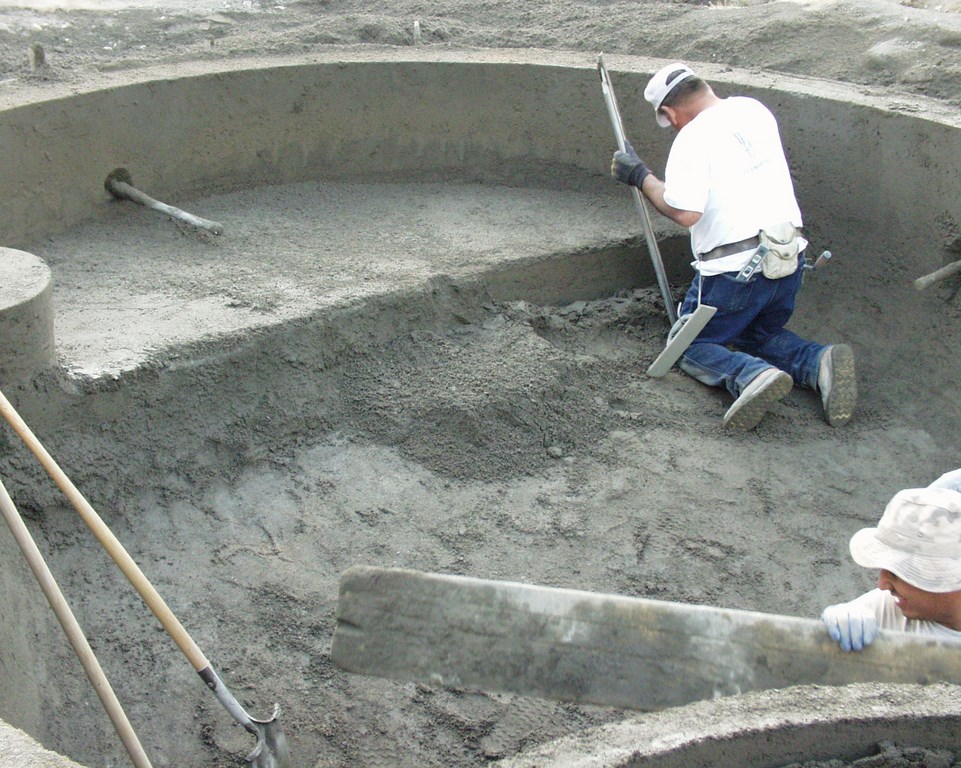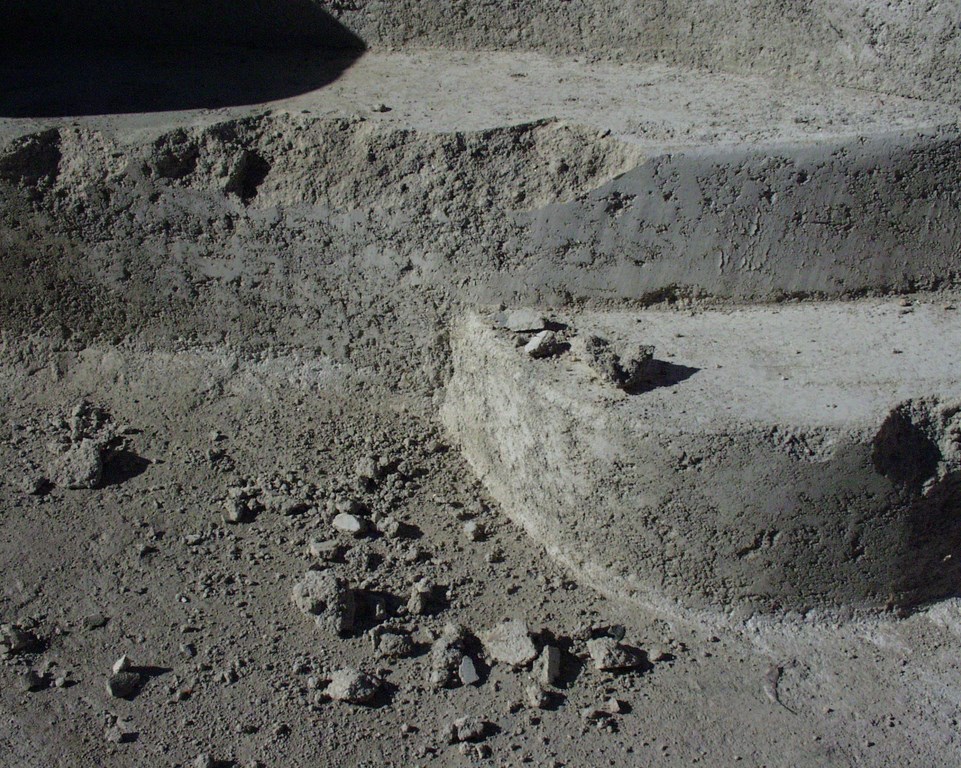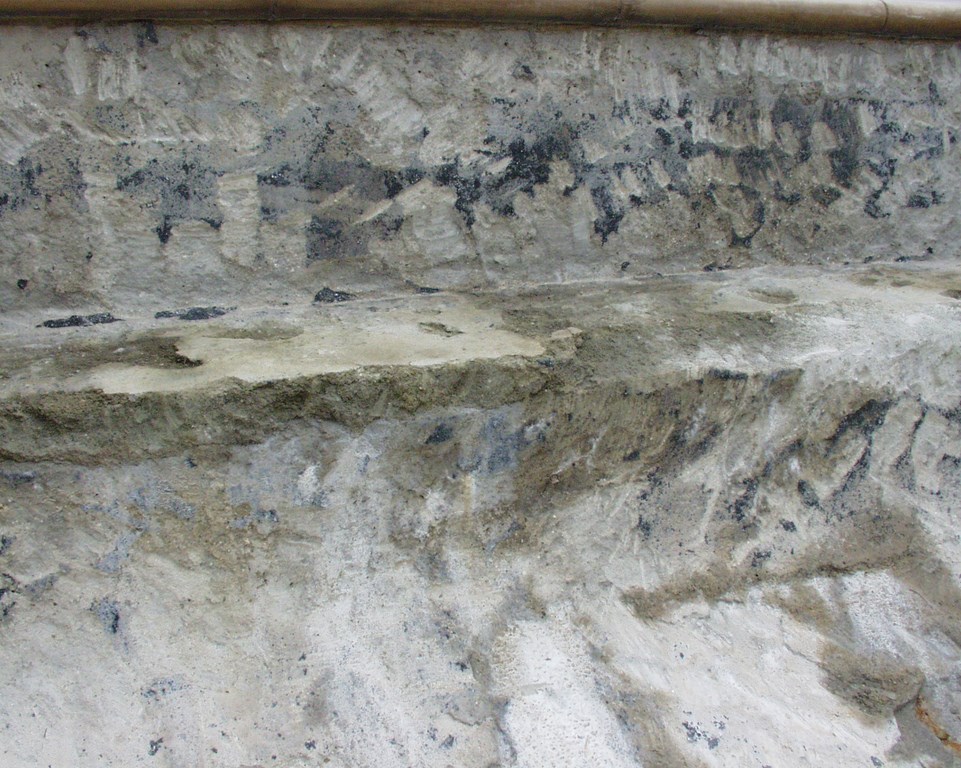Bad Benchmarks

When you work with any type of concrete, there are right and wrong ways to do things – basic issues of workmanship that really do determine whether a structure will be reliable or not.
In the case of swimming pools and spas built using pneumatically applied concrete – either shotcrete or gunite – there’s a presumption in structural design that the concrete will cure to the strength specified, which, in the case of pools and spas, is typically 2,000 pounds per square inch. If that’s not the case, these structures do not meet their specifications and may be subject to failure as a result.
To achieve that desired level of strength, the concrete must be properly applied. In both shotcrete and gunite application, the force of the pneumatic pressure is what forms the monolithic concrete structure. Specifically, this means that any material that isn’t put in place at high velocity directly from the nozzle is not structurally viable.
In other words (and as has been noted countless times in this magazine and elsewhere), rebound and trimmings should never be used to form any part of a gunite or shotcrete shell or left in any location in the structure where they might raise the risk of future problems of any sort. (For more on rebound, see the first sidebar below.)
Not using rebound as a structural material is a baseline workmanship principle that should never be violated, but, unfortunately, that’s just not the case in a large number of (mostly residential) swimming pool/spa projects. Evidence of these transgressions is found most often on the steps and benches inside spas and shows up mainly in the form of delaminations that result in unsightly plaster cracks.
TELL-TALE CRACKS
Through the years, my work as a structural engineer has involved the inspection of hundreds of failed swimming pool and spa structures. These cracks on spa benches are definitely one of the most common problems I see.
Before I am called to a site, the problem more often than not is seen as a plaster defect, and it has generally been the plastering contractor who has gotten the initial call from an upset pool builder whose client is demanding an immediate fix. The truth, however, is that the plaster is rarely the culprit in these situations.
| Saw-cutting the damaged area of this spa bench made it possible to flick off a piece of the plaster and discover the disaster lurking beneath the hard shell. It’s rare even in cases of step or bench failure to find junk so sandy that you can plunge a finger into it with ease. |
Yes, there are cases when cracking extends from some sort of plaster delamination, but that is the case in only a minor percentage of the cases I’ve examined. Far more commonly, the problem extends from unreliable concrete beneath the plaster. Time and time again, chipping away the plaster layer reveals a gunite substructure that literally crumbles at the touch – even though this material should be able to resist damage of a solid blow by a hammer.
It bears mentioning that, in many cases, the plaster is the only thing holding the step or bench together, even though it is intended as a waterproofing membrane and not a structural element. It should also be noted that, in a vast majority of cases, the problem occurs in pools and spas that were built using gunite rather than shotcrete, a distinction I’ll get to later.
|
Inside Rebound Aside from it being a waste product of pneumatic application, what’s wrong with using rebound as a structural material? Think of a baseball that’s coated with cement and thrown very fast against a rigid wall. The result is that the baseball ricochets off the rigid wall but, as this happens, a substantial amount of the cement that coated the ball becomes splattered against the wall. The ball, now lacking a good part of its cement coating, falls to the most convenient landing spot. Similarly with gunite and shotcrete, a portion of the high velocity shot material – primarily the larger aggregates – ricochets or rebounds off the receiving surface and lands on the nearest horizontal plane. The key point of this comparison is that, like the ball, the “rebound” aggregate has lost a substantial amount of its cement and is therefore no longer viable as a structural material. This is so widely recognized that, in fact, uniform building codes do not permit the use of rebound in structures. — R.L. |
Further investigation reveals the plain truth that the concrete under the cracked steps and benches has nowhere near the required 2,000-psi strength and that eventual failure was inevitable.
In many cases, this defect in basic construction is seen when plaster is removed from the shell for repair or refinishing. Once the plaster is stripped away, significant parts of the steps and benches simply fall apart, necessitating complete reinstallation. The problem here is that the person on the job at that point is a plaster applicator who has absolutely nothing to do with installing gunite.
This is when the rounds of finger pointing begin and the homeowner faces the hellish experience of trying to get the spa reworked, perhaps many years after initial construction. These situations are bad for everyone involved, and cases such as these have been a real black eye for the pool and spa industry for many years.
PLACING BLAME
The timing of these incidents often leads to wild and desperate conjecture about the nature of the problem.
Because these types of failures occur most commonly in spas, for example, there is often a presumption that warm water has something to do with the failures. This leads gunite applicators to point the finger at the quality of the plaster job or, in some cases, at aggressive water chemistry. The latter is an amazing charge, the supposed culprit being low-pH water that penetrates the plaster and somehow attacks the gunite substrate, thereby weakening the structure and causing the cracking.
My amazement with the aggressive-water allegation comes from the fact that when you strip away the plaster, the loose gunite is often bone dry. And anyway, how could aggressive water destroy the gunite beneath plaster without destroying the plaster as well? Both materials are made of Portland cement and both typically have a high in-place pH, so the explanation simply makes no sense.
I’ve confirmed this opinion with Dr. Damian Kachlakev, Ph.D., P.E., who directs the National Pool Industry Research Center at the California Polytechnic State University in San Luis Obispo, Calif. One of his current research projects is about the durability of pool-surface coatings and aggressive pool water. As he puts it, “It is clear that the reason for the delamination is not aggressive water chemistry of the swimming pools or pool surface imperfections, but shear deficiency of the gunite material.”
| The origin of the problem seems obvious: It has to do with the use of gunite rebound in shaping steps and benches. This material has no structural value in a watershape’s shell: It should be gathered up and discarded – no exceptions! |
But this leaves us with a couple of key questions: Why mostly spa steps and benches? Why mostly gunite and not shotcrete? Why the weak concrete?
After-the-fact examinations reveal that the cracking is caused by bad concrete, but that doesn’t tell the whole story. This is why, for the past several years, I’ve made a point of watching gunite installations all over the country whenever I can – paying particular attention when spa steps and benches are being installed.
My observations have made the cause of the problem painfully obvious, and it all boils down to the use of rebound and trimmings in forming these parts of gunite structures. In fact, my observations show that at least the upper portion of spa benches and steps are often formed using this waste material.
DIGGING DEEPER
What I’ve typically observed is that once the spa and dam wall between the spa and the pool have been shot and the hose has been pulled back into the pool, a finisher jumps into the spa and starts cutting the walls. The trimmings from the walls fall on the top of the shot portion of the steps and benches.
What lies between the fallen trimmings and the top of the shot portion of the bench or step? It’s that bad stuff called “rebound.” Next, this mixture of low-cement-content rebound and trimmings, without pneumatic application, is typically used to finish the tops of the steps and benches.
Instead of this shortcut, there are really two proper choices for good gunite installation practice: Either shoot the benches and steps to final elevation when the spa is initially shot, or bring the hose back into the spa after initial cutting to shoot the steps and benches to final elevation. In both cases, the final cutting of the tops of the steps and benches should always be done within pneumatically applied material – better yet, with pneumatically applied material not placed over waste material.
| This newly shot shell shows the tell-tale signs of rebound use. The rebound-filled top surface may be capable of holding its shape until it is encapsulated in plaster, but if it is bumped or disturbed in any way, it will crumble and fall away. Again, this isn’t a competent substrate for plaster and should never be used. |
To be sure, it’s a hassle to pull the hose out of the pool and back over to the spa. And of course the dam wall is now in place and care must be taken not to damage it. This is likely why so many of the contractors I’ve watched do not bring the hose back into the spa but simply use rebound and other junk to finish the tops of their benches and steps.
It would be easy to blame these on-site deficiencies on laziness or a desire to save time and effort and therefore boost profit margins. You could also chalk it up to a lack of training or experience. No matter the source, the outcome is always the same: The spa steps and benches have not been shaped using pneumatically applied concrete – a direct violation of any reasonable set of concrete-workmanship standards.
So why does the problem occur mostly with gunite rather than shotcrete? Basically, it has to do with the natures of the two products.
[ ] In gunite application – the dry-mix method – dry cement and aggregate are mixed with water at the nozzle just before the material is shot into place. Higher air volume is required, because it is compressed air that moves the dry material through the hose. In addition, less water is used – in fact, only enough to provide the material with the plasticity needed for placement and cement hydration. This high velocity and lower water/cement ratio are factors that make gunite a potentially superior product. [ ] In shotcrete application – the wet-mix method – a product that is essentially low-slump concrete enters the hose already mixed with water. A concrete pump moves the material through the hose (by comparison to the compressed air that carries the flow of gunite), so there’s a lower air volume but a higher water content to make the mixture pumpable.When shot, the result with either product is essentially the same, but there’s one key difference that has profound implications when it comes to step and bench failures in spas: The gunite process results in greater amounts of rebound.
By nature, this gunite rebound is lower in both cement and moisture content and therefore lacks sufficient plasticity to adhere to the shot material either below it or applied later above it. With shotcrete, by contrast, the material is fully wetted concrete applied at a lower velocity that results in less rebound and waste in general – that is, there’s simply not as much loose material available for making steps and benches in spas when shotcrete is used. Moreover, shotcrete rebound and trimmings are likely to have sufficient plasticity to adhere to the underlying (that is, shot) steps or benches.
| Evidence of the use of rebound often shows up years later, when a watershape’s interior plaster is stripped for refinishing. In all of these cases, the rebound-bearing steps and benches fell apart once the plaster that held it together was stripped away, leaving the homeowners and plasterers with a mess that won’t just take care of itself – and the watershaping industry with a black eye it really doesn’t need. |
Of course, rebound is used in forming steps and benches in pools as well, and I’ve seen failures in these structures. But the fact remains that failures in spas occur with many times the frequency they do in the associated pools, which leads me back to the issue at hand, “Why spas?”
Remember that after shooting the spa, the hose goes back in the pool. While it is never recommended to place rebound and trimmings in any steps or benches, often enough shot material is placed above the rebound-laden pool steps and benches to preclude the telltale cracks in the surface coating that expose the underlying delamination.
When you add it all up, there’s really no mystery to any of this at all: Every year, scores of spa steps and benches crack because they have not been not made with properly applied concrete, basically because it’s easier to do it the wrong way than it is to do it the right way.
ANSWERING THE CALL
There’s good news and bad news in this discussion.
The good news is that the fix is simple: Don’t use rebound to form steps or benches anywhere in a pool/spa shell – end of discussion!
|
Resources: To help resolve some of the workmanship issues involved in step and bench failures (among other things), my firm, Pool Engineering, Inc. of Anaheim, Calif., is preparing to sponsor nozzleman training that will lead to ACI certification. It is our hope that having more ACI-certified nozzlemen working in the pool industry will help improve the overall quality and durability our finished products. — R.L. |
The bad news is that this practice is so common in the industry that it’s hard to imagine things changing without some sort of concerted information campaign and increased education in workmanship and good construction practices. The simple fact is that there is a right way to apply concrete and that guidance in doing so is available from the American Concrete Institute and the American Shotcrete Association.
I’ve recently been appointed to the Pool & Spa Committee of the American Shotcrete Association. The goal of this committee is to develop a guide on pool- construction practice, and it is hoped that in the not-too-distant future, the faulty practice discussed in these pages (along with others that may be discussed in future issues) will no longer be so frequent a cause of costly repairs and dissatisfied pool owners.
My purpose here is to make designers and builders aware of these issues and to urge everyone to make certain their subcontractors are observing proper workmanship standards on all fronts – particularly when it comes to the proper discarding of rebound.
It’s the right way to get an important job done.
Ron Lacher, P.E., is president of Pool Engineering Inc., in Anaheim, Calif. A licensed civil engineer, he spent the first ten years of his career managing large-scale construction projects for a variety of governmental agencies before becoming a pool builder in Southern California. In 1992, Lacher founded Pool Engineering, which specializes in developing structural and engineering plans. Since then, the firm has provided structural documents and details for thousands of residential and commercial swimming pools. He regularly serves as a field expert for California’s Contractor State License Board, insurance companies, homeowners and pool-construction companies.











